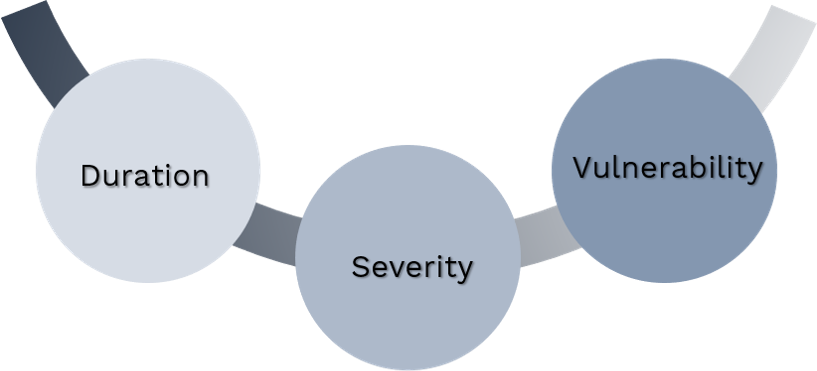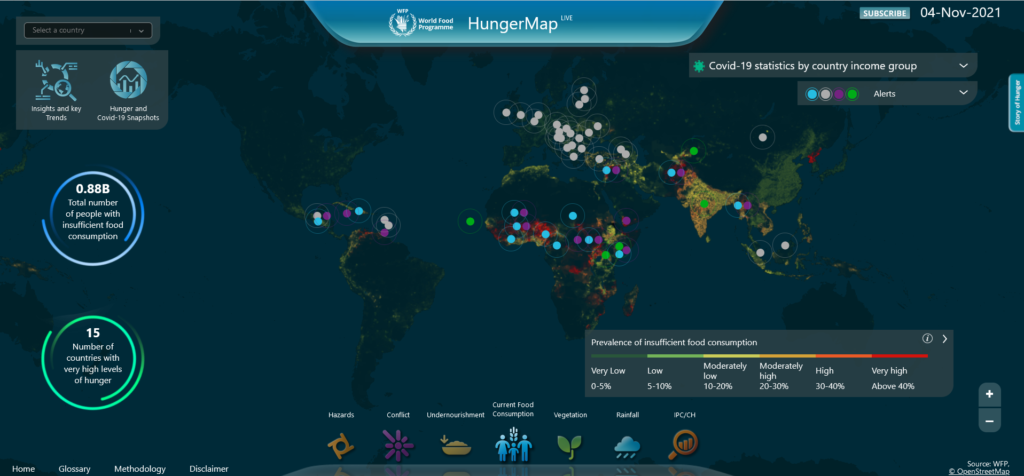Food Security and Food Systems – old
The term food security was institutionalized in the 1970s and evolved over time. Find out about the development of the food security concept below.
What is food security?
“Food security exists when all people, at all times, have physical and economic access to sufficient, safe and nutritious food that meets their dietary needs and food preferences for an active and healthy life” (World Food Summit, 1996)
But what does that mean? In the video below, prof. dr. Andy Nelson from the International Institute for Geo-Information Science and Earth Observation, University of Twente (ITC/UTwente) gives an overview on food security and food systems.
Dimensions of food security
For food security objectives to be realized, all four dimensions must be fulfilled simultaneously. This means, if food is available, accessible, and useable, and if all of these are stable, then food security is achieved. If any one of these is not met, then the result is food insecurity.

Aspects of food insecurity
In turn, when there is food insecurity, it can be characterized according to the aspects of duration, severity, and vulnerability of the affected people.

Duration
Chronic: Extended periods of poverty, lack of assets, and inadequate access to productive or financial resources.
Transitory: Short-term shocks and fluctuations in food availability and food access, including year-to-year variations in domestic food production, food prices, and household incomes.
Severity
When analyzing food insecurity, it is not enough to know the duration of the problem that people are experiencing, but also how intense or severe the impact of the identified problem is on the overall food security and nutrition status
Different ‘scales’ or ‘phases’ to ‘grade’ or ‘classify’ food security have been developed by food security analysts using different indicators and cut-off points or ‘benchmarks’.
Vulnerability
The dynamic nature of food security is implicit when we talk about people who are vulnerable to experiencing food insecurity in the future.
Vulnerability is defined in terms of the following three critical dimensions:
- vulnerbilty to an outcome;
- from a variety of risk factors;
- because of an inability to manage those risks
Vulnerability analysis suggests two main intervention options:
- Reduce the degree of exposure to the hazard;
- Increase the ability to cope
SOURCE: FAO_Introduction to the basics_concept of_Food_Security
Measuring food security is complex. Dashboards and indicators are useful tools that help to simplify the task. They allow to quickly find out about and compare the food security status in different locations of the world. Explore the World Food Programme’s HungerMap and the food (in)security indicators constructed by the Economist Impact and Concern below. When relying on an index for information, it is, however, always important to bear in mind the underlying data, rationale, and model used to calculate it.
Follow the link to the World Food Programme’s Hunger Map and click on your countries of interest to view their state of food security, nutrition, food security trends, as well as some economic indicators!
Explore the map displaying the Global Food Security Index (GFSI). It considers 59 indicators of food affordability, availability, quality and safety, and natural resources and resilience across a set of 113 countries.
Hunger is the other side of the coin of food security. The Global Hunger Index (GHI) is constructed based on indicators of undernourishment, child wasting, child stunting, and child mortality.
–> insert another map showing the GHI
Food Systems

Food systems (FS) encompass the entire range of actors and their interlinked value-adding activities involved in the production, aggregation, processing, distribution, consumption, and disposal of food products that originate from agriculture, forestry or fisheries, and parts of the broader economic, societal and natural environments in which they are embedded.
The food system is composed of sub-systems (e.g. farming system, waste management system, input supply system, etc.) and interacts with other key systems (e.g. energy system, trade system, health system, etc.). Therefore, a structural change in the food system might originate from a change in another system; for example, a policy promoting more biofuel in the energy system will have a significant impact on the food system.
A sustainable food system (SFS) is a food system that delivers food security and nutrition for all in such a way that the economic, social, and environmental bases to generate food security and nutrition for future generations are not compromised.
This means that:
- It is profitable throughout (economic sustainability)
- It has broad-based benefits for society (social sustainability); and
- It has a positive or neutral impact on the natural environment (environmental sustainability).

Sustainable food systems lie at the heart of the United Nations’ Sustainable Development Goals (SDGs). The SDGs call for major transformations in agriculture and food systems in order to end hunger, achieve food security, and improve nutrition by 2030.
To realize the SDGs, the global food system needs to be reshaped to be more productive, more inclusive of poor and marginalized populations, environmentally sustainable and resilient, and able to deliver healthy and nutritious diets to all. These are complex and systemic challenges that require a combination of interconnected actions at the local, national, regional, and global levels.
Traditional food security programs tend to adopt a production-focused approach, which seeks to directly influence food security through increasing the supply of food. However, the dramatic pace of food system changes over the past decades has brought about complex interactions and feedback loops that impact food security and nutrition in many different ways.
A food systems approach considers all relevant causal variables of a problem and all social, environmental, and economic impacts of the solutions to achieve transformational systemic changes.
In sustainable food system development, sustainability is examined holistically. In order to be sustainable, the development of the food system needs to generate positive value along three dimensions simultaneously: economic, social and environmental.
Sources & further reading
Transforming our world: the 2030 Agenda for Sustainable Development, https://sdgs.un.org/2030agenda



